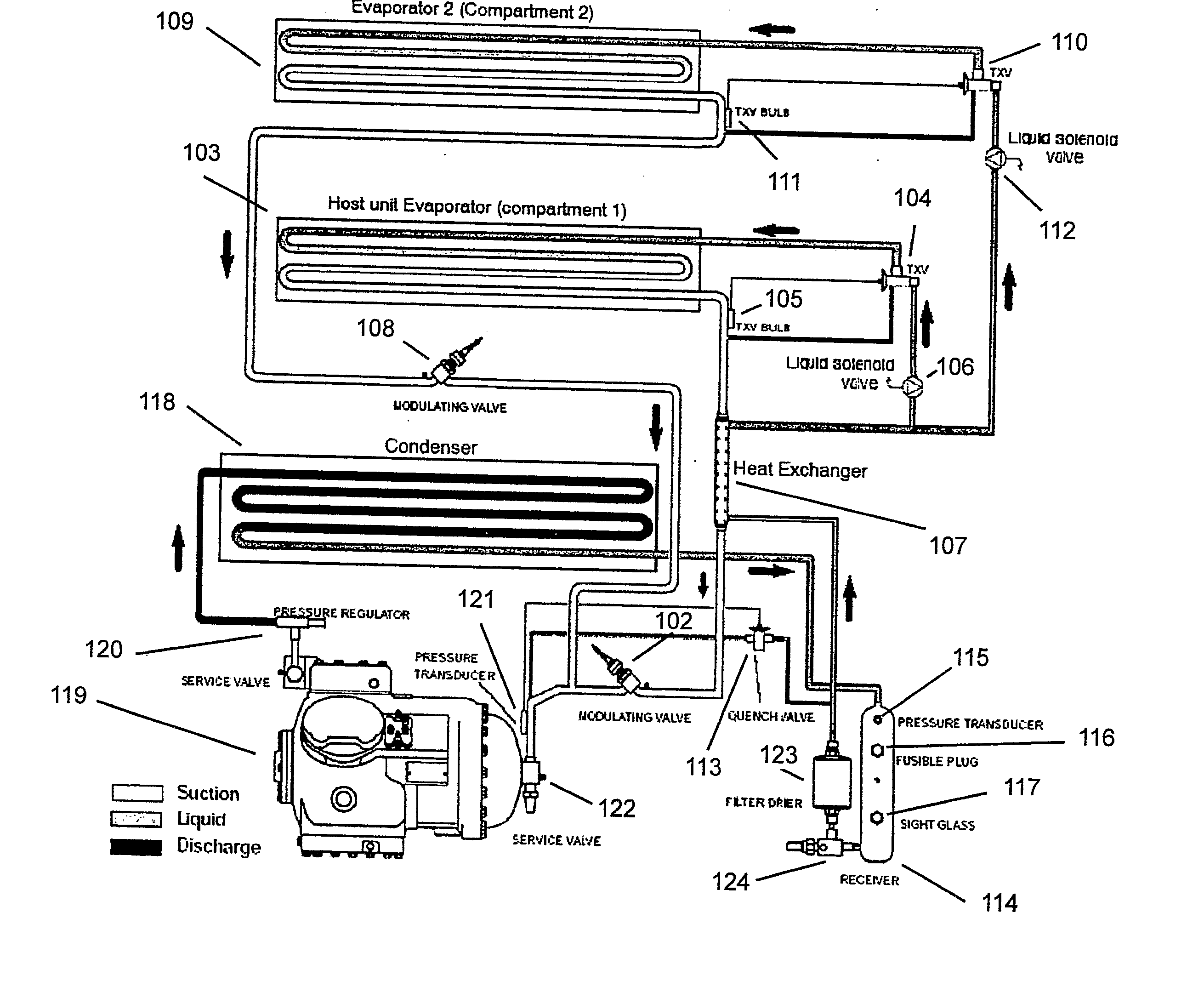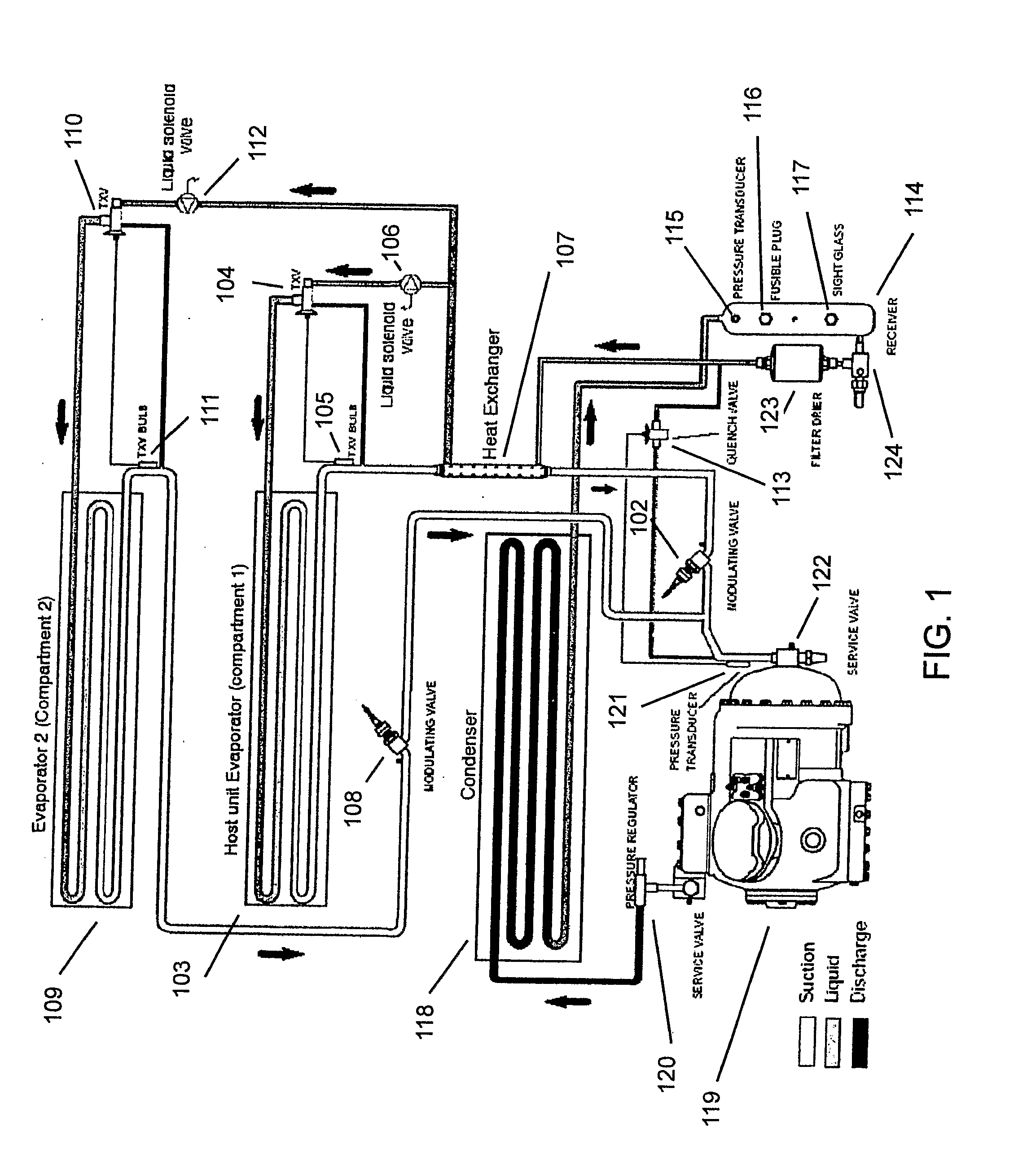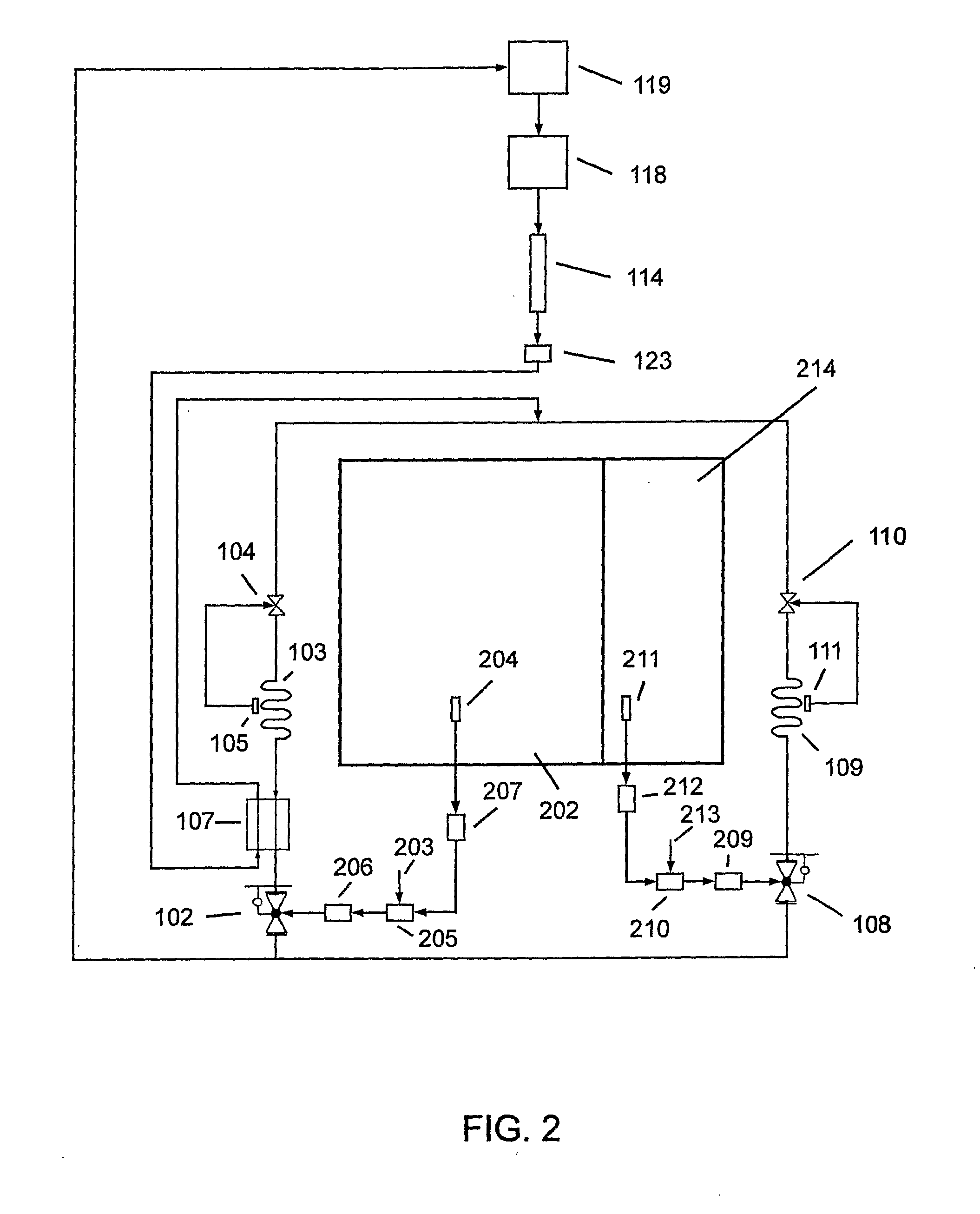Method for Controlling Temperature in Multiple Compartments for Refrigerated Transport
- Summary
- Abstract
- Description
- Claims
- Application Information
AI Technical Summary
Benefits of technology
Problems solved by technology
Method used
Image
Examples
example 1
[0026]The flow chart of FIG. 2A shows an exemplary algorithm to perform the aforementioned prioritization and apportioning of refrigerant during a temporary situation where the transport refrigeration system cooling capacity is insufficient to maintain both compartments at setpoint temperature. Paths of prioritizing actions depend on whether the priority compartment is a freezer compartment or a perishable goods compartment.
[0027]In the case of a freezer compartment, prioritizing actions are only required if the freezing temperature reaches a still frozen safety “ceiling”. As long as the freezing temperature is below the ceiling, there is no significant deterioration of the frozen goods. This path is shown by the “yes” arrow indicating a freezer compartment temperature below the ceiling that results in a still unrestricted flow of refrigerant to a lower priority secondary compartment. Note that even though in this case the secondary compartment has been deemed of lower priority, the...
example 2
[0030]The algorithm illustrated by the flow chart of FIG. 2B shows how according to another embodiment of the invention prioritization can be accomplished where the transport refrigeration system electrical load has reached an electrical current limit. Once an electrical current limit is reached, first the remote compartment refrigerant flow is restricted by holding a pre-defined remote compartment delta T (as can be accomplished by modulating the refrigerant flow with an ESMV). If the limit is no longer exceeded, no further action need be taken. Or, if the limit is still exceeded, the prioritized compartment can also be brought to a pre-determined delta T by also restricting the flow of refrigerant to the priority compartment. If the current limit is still exceeded, in a near worst case situation, refrigerant flow can be restricted to an absolute minimum flow (but, not zero flow) to both compartments.
[0031]Note that in either the case of insufficient cooling or the case of excessiv...
example 3
[0032]A test was conducted to show how modulating the suction pressure from a secondary evaporator compares to prior art technology where secondary compartment temperature control has been achieved by cycling on and off the refrigerant flow to the supply line of the secondary evaporator. FIG. 3 shows data for a test of a two compartment refrigerated transport having a host compartment and a remote compartment. The temperature of the host compartment was set to a setpoint of 1.7° C. and the temperature of the remote compartment was set to a setpoint temperature of 0° C. H-SMV is the modulation position of the host SMV, and R-SMV is modulation position of the remote SMV. SMV position over time is represented on a scale having a fully opened position at the top of the graph and a nearly fully closed position at the bottom of the graph. RTS and STS refer to a return temperature sensor and a supply temperature sensor on the host (H) and the remote (R) evaporators. For example, H-RTS is a...
PUM
 Login to View More
Login to View More Abstract
Description
Claims
Application Information
 Login to View More
Login to View More - R&D
- Intellectual Property
- Life Sciences
- Materials
- Tech Scout
- Unparalleled Data Quality
- Higher Quality Content
- 60% Fewer Hallucinations
Browse by: Latest US Patents, China's latest patents, Technical Efficacy Thesaurus, Application Domain, Technology Topic, Popular Technical Reports.
© 2025 PatSnap. All rights reserved.Legal|Privacy policy|Modern Slavery Act Transparency Statement|Sitemap|About US| Contact US: help@patsnap.com



